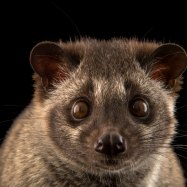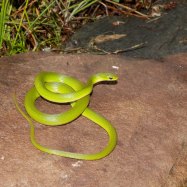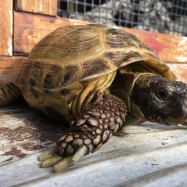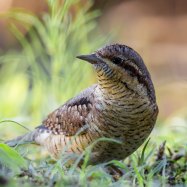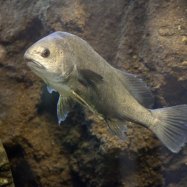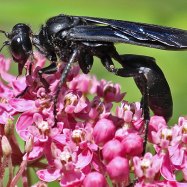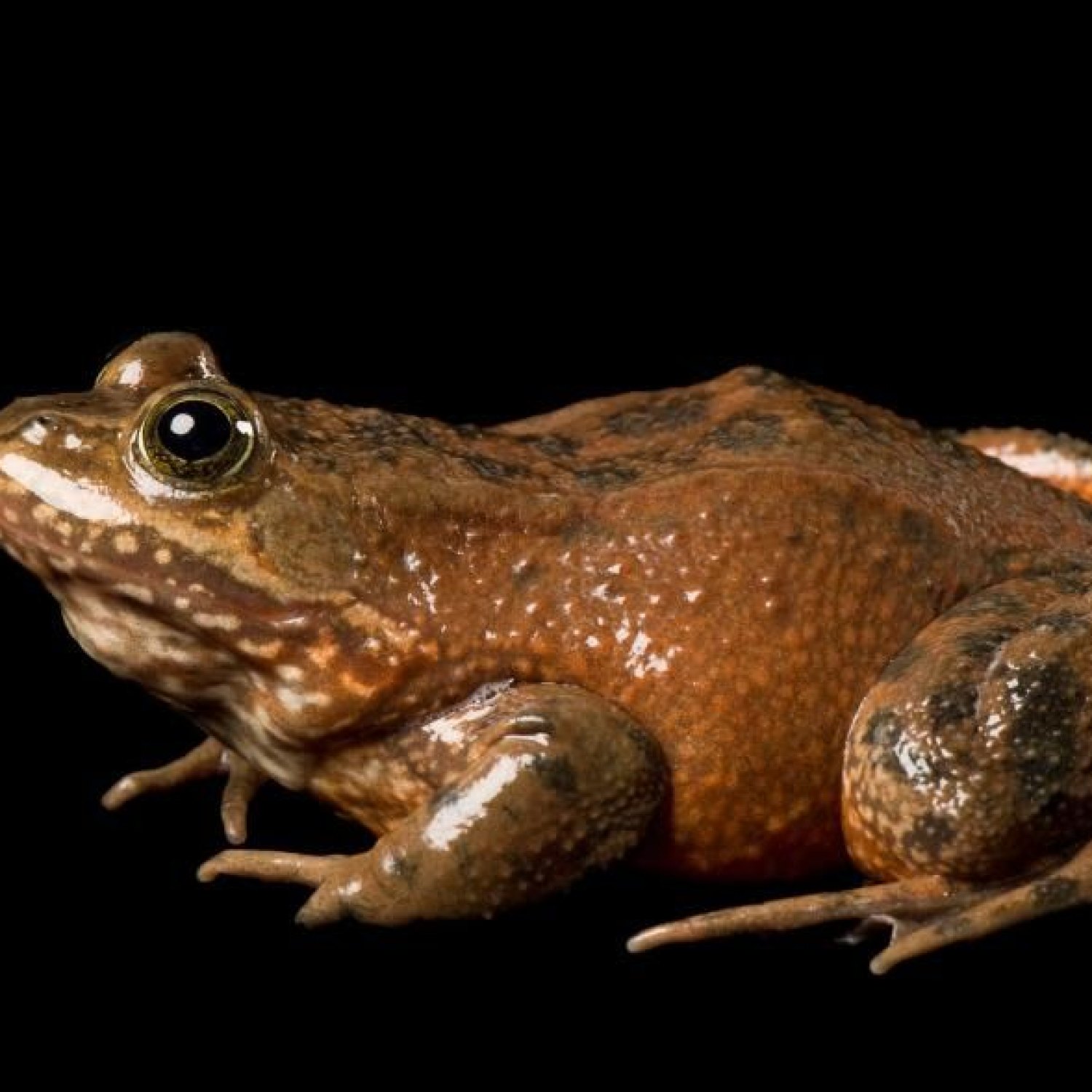
Oregon Spotted Frog
2.5 to 4 inches
The Oregon Spotted Frog, named for its vibrant spots, is a native amphibian of Oregon, Washington, and British Columbia. With a body length of 2.5 to 4 inches, and a squat and robust body shape, this species is a sight to behold. A member of the Ranidae family, it can be found in wetland habitats and is considered an indicator of a healthy ecosystem. #OregonSpottedFrog #Ranidae #AmphibianAwareness
Animal Details Summary:
Common Name: Oregon Spotted Frog
Kingdom: Animalia
Habitat: Wetlands, lakeshores, and slow-moving streams
The Enigmatic Oregon Spotted Frog: A Symbol of Resilience, Beauty, and Conservation
The lush wetlands, lakeshores, and slow-moving streams of the Pacific Northwest region of North America are home to a fascinating amphibian species – the Oregon Spotted Frog. Scientifically known as Rana pretiosa, this species has captured the hearts and minds of many with its intriguing characteristics and unique natural habitat.In this article, we delve into the world of the Oregon Spotted Frog, exploring its physical features, behavior, habitat, and the conservation efforts being made to protect this remarkable creature.
The Basics: Taxonomy and Physical Characteristics
The Oregon Spotted Frog belongs to the Animalia kingdom, Chordata phylum, and Amphibia class Oregon Spotted Frog. As a member of the Anura order, it shares its clan with around 7,000 other species of frogs and toads. This species belongs to the family Ranidae, which is one of the largest and most diverse groups of frogs found across the world.The Oregon Spotted Frog is also referred to as the “Oregon Frog,” “Northwestern Spotted Frog,” or “Blue-Spotted Frog.” Its scientific name "Rana pretiosa" is derived from the Latin word "pretiosus" meaning "precious" and rightly so, as it is a precious species that deserves our utmost attention and care.
This frog's coat is made up of a range of colors – from a soothing shade of green to a dark brown color with irregularly shaped spots scattered across its back. These spots are a defining characteristic of the Oregon Spotted Frog and are often used to differentiate between different subspecies. As compared to male frogs, female Oregon Spotted Frogs tend to be slightly larger and may even reach a length of 4 inches, whereas males usually reach up to 2.5-3 inches.
The Habitat: A Home in the Wetlands
The Oregon Spotted Frog is endemic to the Pacific Northwest region of North America, spanning across the United States and Canada Olive Sea Snake. Within this range, it can be found in various locations, including Oregon, Washington, and British Columbia.This species is highly adapted to living in and around wetlands, such as marshes, bogs, ponds, and lakeshores. These habitats are essential for the survival and wellbeing of the Oregon Spotted Frog, as they provide a steady supply of food and shelter.
Interestingly, Oregon Spotted Frogs have a symbiotic relationship with certain aquatic plants in their habitat. These plants provide structural support for the frog’s egg masses and tadpoles, making it crucial for their survival.
The Behavior: Carnivorous and Complementary
As mentioned earlier, this species is part of the order Anura, meaning it has a tailless body, long hind legs, and is highly adapted for jumping and swimming. In terms of behavior, Oregon Spotted Frogs are primarily nocturnal and are most active at night.Being carnivorous, they have an interesting feeding method, where they use their tongues to catch and swallow their prey, which mainly consists of insects, spiders, snails, and small vertebrates like tadpoles and small fish.
Moreover, Oregon Spotted Frogs are known to be complementary to certain other species. For instance, studies have shown that certain native fishes in their habitat benefit from the presence of these frogs. The fish prey on insects, and in the process, open up the vegetation, providing more food sources for the frogs. Talk about a win-win situation!
Conservation Efforts: Saving an Endangered Species
Despite the Oregon Spotted Frog's intriguing characteristics, this species is now facing significant threats to its survival. One of the leading causes behind their declining population is the destruction and alteration of their natural habitat. Wetlands all over North America are being drained and filled up for various human activities, such as agriculture and development, leaving the frogs with little to no suitable habitat to survive in.According to the International Union for Conservation of Nature (IUCN), the Oregon Spotted Frog is classified as an endangered species, with a declining population trend. In the United States, it has been listed as an endangered species under the Endangered Species Act since 2014. In Canada, it is designated as a "Species of Greatest Conservation Need" and is protected under the British Columbia Wildlife Act.
Fortunately, many organizations and agencies have recognized the importance of conserving this species and have undertaken various conservation efforts to protect and promote its survival. In the United States, the Oregon Zoo has developed a program for the conservation of Oregon Spotted Frogs, known as the "Northwestern Pond Turtle Recovery Project."
This program aims to raise Oregon Spotted Frogs in captivity, with the ultimate goal of releasing them back into their natural habitat. This has proven to be a success, with over 300 Oregon Spotted Frogs being released into the wild since the project's inception in 2007.
In Canada, the British Columbia Ministry of Environment has collaborated with various organizations to develop conservation strategies, such as habitat restoration, monitoring, and public awareness campaigns. These efforts have led to an increase in the habitat connectivity for this species, providing a glimmer of hope for their long-term survival.
The Symbol of Resilience: Protecting the Oregon Spotted Frog
The Oregon Spotted Frog is not only a fascinating creature but also a symbol of resilience, adaptability, and the importance of preserving our planet's biodiversity. With their unique and complementary behaviors, they play a vital role in maintaining the balance of their ecosystem.As humans, it is our responsibility to take care of the environment and the creatures that call it home. We must prioritize conservation efforts and work towards preserving the Oregon Spotted Frog's habitat. Additionally, we can support organizations and agencies that are actively working towards the conservation of this species.
Moreover, as individuals, we can also make a difference by reducing our impact on the environment. Simple actions like reducing our carbon footprint, properly disposing of waste, and being mindful of our surroundings can go a long way in protecting the Oregon Spotted Frog and other endangered species.
In conclusion, the Oregon Spotted Frog may be a small creature, but its significance and impact on its ecosystem are immeasurable. By learning about and appreciating the beauty and importance of this species, we can all play a part in conserving and protecting it for generations to come. Let us strive to be responsible and caring stewards of our environment, for the sake of not only the Oregon Spotted Frog but all living beings.

Oregon Spotted Frog
Animal Details Oregon Spotted Frog - Scientific Name: Rana pretiosa
- Category: Animals O
- Scientific Name: Rana pretiosa
- Common Name: Oregon Spotted Frog
- Kingdom: Animalia
- Phylum: Chordata
- Class: Amphibia
- Order: Anura
- Family: Ranidae
- Habitat: Wetlands, lakeshores, and slow-moving streams
- Feeding Method: Carnivorous
- Geographical Distribution: Pacific Northwest region of North America
- Country of Origin: United States and Canada
- Location: Oregon, Washington, and British Columbia
- Animal Coloration: Green or brown with dark spots
- Body Shape: Squat and robust
- Length: 2.5 to 4 inches
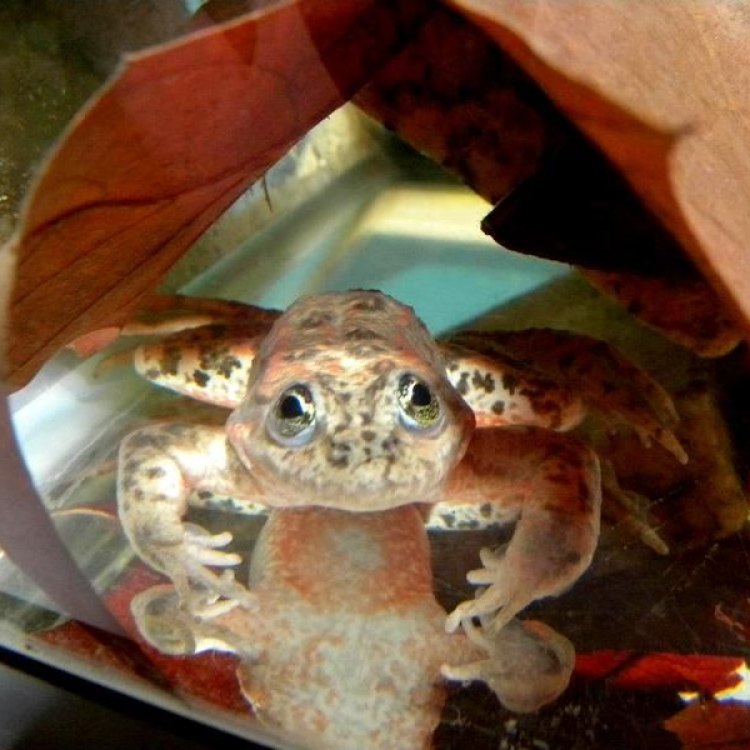
Oregon Spotted Frog
- Adult Size: 2.5 to 4 inches
- Average Lifespan: 6 to 10 years
- Reproduction: Eggs
- Reproductive Behavior: Amplexus
- Sound or Call: Loud mating call resembling a finger running along a comb
- Migration Pattern: Non-migratory
- Social Groups: Solitary
- Behavior: Nocturnal and secretive
- Threats: Habitat loss, pollution, invasive species, and climate change
- Conservation Status: Endangered
- Impact on Ecosystem: Indicator species for wetland health
- Human Use: Protected species
- Distinctive Features: Prominent dark spots on a green or brown body
- Interesting Facts: One of the most endangered amphibians in the Pacific Northwest
- Predator: Birds, snakes, and mammals
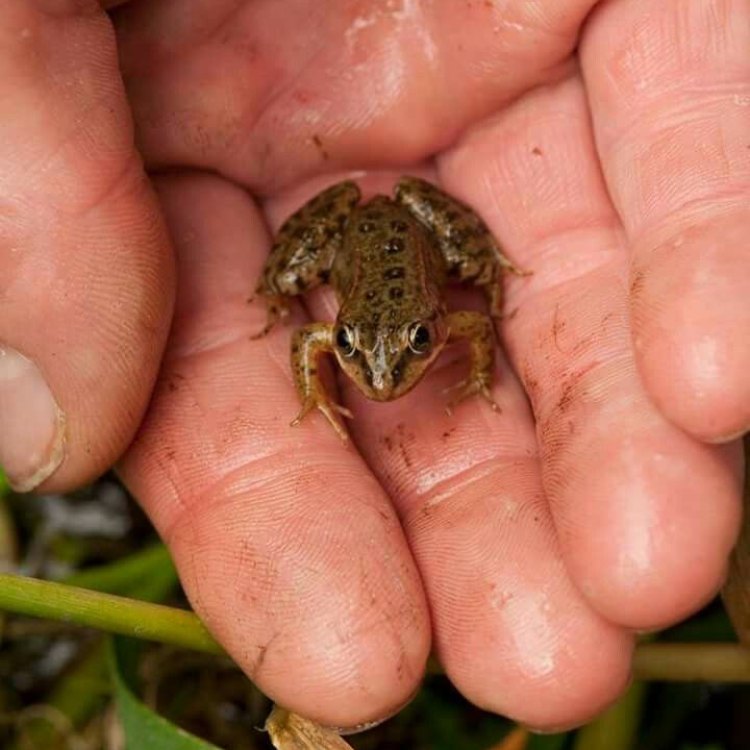
Rana pretiosa
The Endangered Oregon Spotted Frog: A Small but Mighty Amphibian
The Pacific Northwest is home to an incredible array of wildlife, from towering trees to majestic birds and elusive mammals. Among these creatures is the Oregon spotted frog (Rana pretiosa), a small but mighty amphibian that calls the region's wetlands home.In this article, we dive deep into the fascinating world of the endangered Oregon spotted frog. From its unique features and behaviors to its critical role in the ecosystem, we'll uncover the importance of this species and the threats it faces PeaceOfAnimals.Com. So, grab your rain boots and let's explore the world of the Oregon spotted frog.
A Small and Mighty Creature
The Oregon spotted frog may be small in size, ranging from 2.5 to 4 inches in length, but it's mighty in its importance to the ecosystem. This endangered species can live for 6 to 10 years, making its lifespan relatively short compared to other amphibians. However, as we'll come to learn, every year of its life is crucial for the survival of this species.Reproduction is a vital aspect of any species, and the Oregon spotted frog follows a unique pattern. Like most frogs, they reproduce through eggs, but it's their reproductive behavior that sets them apart. During breeding season, males engage in a behavior called amplexus, where they grasp onto the female's back as she lays eggs. This not only keeps the eggs safe from predators but also helps in fertilization Okapi.
A Song Like No Other
One of the most distinctive features of the Oregon spotted frog is its loud mating call. Imagine the sound of a finger running along a comb, and that's how these frogs sound. This call can be heard up to a mile away, making it an essential communication tool for finding a mate.Interestingly, this mating call is also a defining characteristic of the species. Researchers have found that the frogs from different populations have slight variations in their calls, allowing them to distinguish between individuals from different areas.
A Shy and Solitary Species
The Oregon spotted frog may have a loud call, but it's an otherwise solitary and secretive species. They are nocturnal creatures, which means they are most active at night, making them quite elusive to spot. They typically spend their days resting in underground burrows or in the water, camouflaging with their surroundings.Their solitary behavior is also evident in their migration patterns. Unlike many other frogs, the Oregon spotted frog is a non-migratory species, meaning they do not move from one location to another for either breeding or foraging purposes.
The Perils of Endangerment
Despite its distinct features and behaviors, the Oregon spotted frog is currently listed as endangered on the IUCN Red List. This means that the species is at risk of extinction, and immediate conservation efforts are necessary for its survival.One of the major threats that the Oregon spotted frog faces is habitat loss. Wetlands, their primary habitat, have been drained or filled for human development, leaving these frogs with no place to call home. Pollution, caused by agricultural and urban runoff, also poses a threat to their survival, as it can contaminate the water they rely on.
Invasive species are another significant threat to this species. Predatory fish, like the bullfrog, pose a threat to the Oregon spotted frog's survival by preying on their eggs and tadpoles. These invasive species can also outcompete the frogs for resources, further impacting their populations.
Moreover, the effects of climate change, such as rising temperatures and changing precipitation patterns, can also have a severe impact on the frogs' survival. As their habitat becomes drier or too hot for them to survive, their populations decline.
An Indicator for Wetland Health
Apart from its intrinsic value, the Oregon spotted frog also plays a crucial role in the ecosystem as an indicator species. Thanks to their sensitivity to environmental changes, they serve as an early warning system for the health of wetlands.Wetlands are essential for many species' survival, as they provide food, shelter, and breeding grounds. They also act as natural water filters and help prevent flooding. The presence of Oregon spotted frogs in an area is a sign of a healthy wetland, highlighting its importance for the ecosystem's overall health.
Protected Species
In recognition of its importance and the threats it faces, the Oregon spotted frog is a protected species. This means that it is unlawful to harm, harass, kill, or possess an Oregon spotted frog without proper authorization.The U.S. Fish and Wildlife Service (USFWS) has also developed a recovery plan for the species, which outlines the actions needed to ensure its survival and recovery. These include preserving and restoring wetlands, controlling invasive species, monitoring populations, and reducing other threats.
Prominent Spots on a Green or Brown Body
One of the most distinguishing features of the Oregon spotted frog is its name-sake spots. Its body is predominantly green or brown, with prominent dark spots decorating its back and legs. These spots help them blend in with their surroundings, making it easier for them to evade predators.Interestingly, these spots also have a role in determining the frog's age. As they grow older, these spots tend to fade, allowing researchers to estimate the frogs' age by counting the remaining spots.
A Species on the Brink
Despite its unique features and importance, the Oregon spotted frog is one of the most endangered amphibians in the Pacific Northwest. Its populations have drastically declined, and it can now only be found in small, fragmented areas in Oregon, Washington, and British Columbia.To protect and restore the species, numerous conservation efforts are underway. The Oregon Zoo has established a captive breeding program for the frogs, with the aim of eventually releasing them into the wild. Additionally, habitat restoration and invasive species control projects are ongoing to create suitable habitats for the frogs to thrive in.
A World Without the Oregon Spotted Frog
As we've learned, the Oregon spotted frog plays a critical role in the ecosystem, from being an indicator species to controlling insect populations and providing food for predators. Without their presence, the health of wetlands and the species that rely on them could decline.But the loss of the Oregon spotted frog would also signify a greater loss - a loss of another unique and fascinating species that make up our diverse planet. As we continue to face environmental challenges, it's essential to recognize the importance of each species and take action to protect and conserve them.
In conclusion, the Oregon spotted frog may be small in size, but it has a massive impact on the Pacific Northwest ecosystem. Its unique features, behaviors, and crucial role make it a species worth protecting. As we work towards its recovery, let us also reflect on our role as stewards of the environment and the impact we have on these precious creatures.

The Enigmatic Oregon Spotted Frog: A Symbol of Resilience, Beauty, and Conservation
Disclaimer: The content provided is for informational purposes only. We cannot guarantee the accuracy of the information on this page 100%. All information provided here may change without prior notice.

